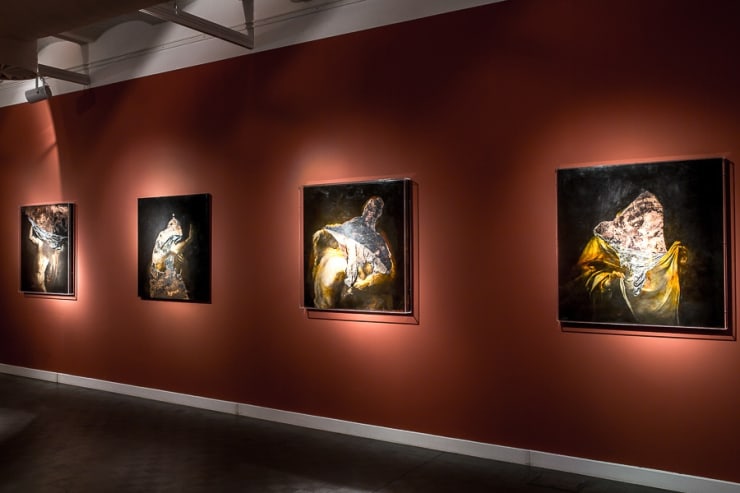January 18-March 22, 2015
TRAFO Center for Contemporary Art
4 Świętego Ducha st.
70-205 Szczecin, Poland
TRAFO Center for Contemporary Art is pleased to present Poland’s first comprehensive institutional exhibition devoted to the art of Nicola Samorì. In his paintings, sculptures, and room installations, he invites the viewer to partake not only into a deeply visual, but also a profoundly physical experience. Combining a sense-penetrating intensity inspired by the theatrical aesthetics of renaissance and baroque art with modern references to the gesture-led field of post-war expressionist painters, Samori’s meticulously paint compositions, hand carved marble sculptures and shimmering abstract canvasses form the basis for his reflections on the role of classicism and the figurative form in contemporary art today.
The exhibition as a whole realizes a sum of the artist’s body of work. In approaching the surfaces of his paintings as a material skin, Samori puts his compositions through an aggressive physical transformation which forces a reordering of the viewer’s perception. In the deconstruction which the work undergoes, it is pushed over the boundary of the strictly 2D and physically enters the viewer’s space. In other paintings Samori continues to experiment with abstract and ‘hidden’ compositions in copper, gold, and silver, which reference the visual practices of icon writing.
In his site-specific installation at TRAFO Center for Contemporary Art, Samori reduces the concept of personal belief to its essential components, the worshipper and the deity, thereby divesting it of its fundamental determinants, namely social context and history. As the viewer is further confronted by an archeological level which becomes viewable in the same moment, the build up of layers of religious and aesthetic history reveal subjective perceptions in the viewer’s own approach to personal belief. Hence, Samori’s installation is not only a forceful reminder of the very pagan roots of modern religion, but is also an examination of modern personal religious practices, or lack thereof, and its reverberations in contemporary art today.
press:
https://www.artsy.net/artwork/nicola-samori-installation-view-of-the-exhibition-religo
http://1995-2015.undo.net/it/mostra/186221








